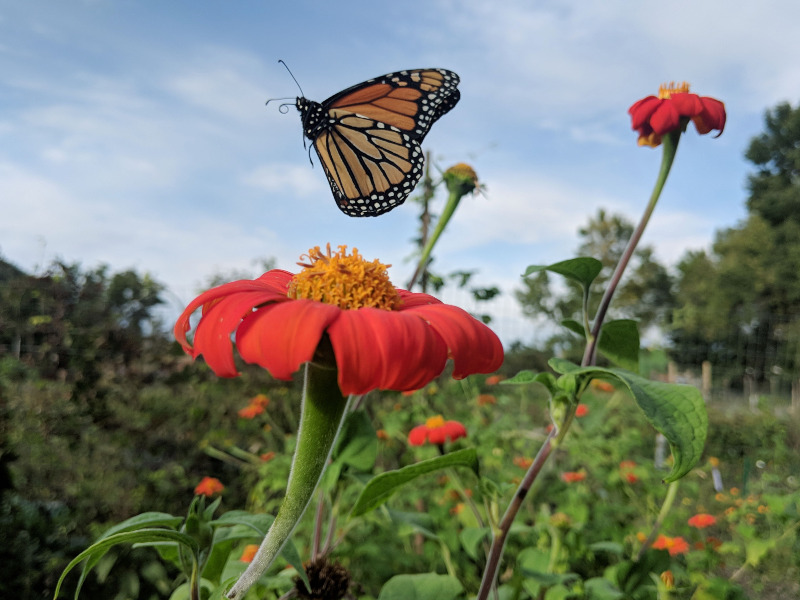About SSFP
About Us
Student Application
Subscribe to Our Newsletter
SSFP in the News
Members of Our Publishers Circle

The monarch butterfly is possibly going to be included on the U.S. government’s endangered species list. This issue stems from global warming, urban development, and herbicides.
Herbicides are a major factor leading to the butterflies' endangerment. Herbicides are used across agriculture and are dangerous to butterflies due to their toxic chemicals. Milkweed is the butterfly's primary source of food. Milkweed is often coated in herbicides that the monarch caterpillars eat, thus killing them before they become butterflies.
Global warming is also another important factor contributing to the possible extinction of the monarchs. Extra carbon dioxide in the atmosphere that is absorbed by the milkweed increases carbon content in the plant. This increased carbon may exceed the tolerance level for these butterflies, leading to their death.
Given these threats to the monarch populations, people are helping by planting herbicide-free milkweed throughout North America. This allows monarchs to have a safe source of food. Some groups that are contributing to save the monarchs are students, garden club members and government agencies. These efforts toward planting milkweed are helpful to the butterflies now and should continue into the future.
The U.S. government is considering putting the monarch butterfly on the endangered species list in 2024. The U.S. Fish and Wildlife Service plans to evaluate the monarch butterfly’s risk of extinction annually. Monarchs may possibly be headed toward extinction unless we make better efforts to help them.
We need to help monarch butterflies so they will not go extinct! By placing this species on the endangered species list, this could increase pressure and awareness in order to advocate for change and solutions in the near future.
[Source: madison.com]
Loading Comments...